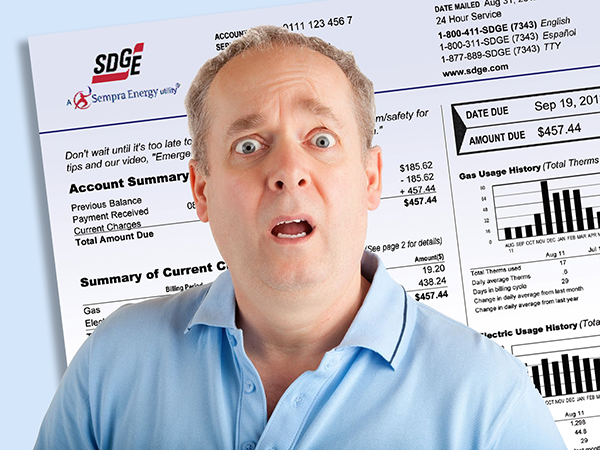SDG&E RATE CHANGES IN 2017

As of January 1, 2017, SDGE has already increased the electricity rates… but that’s not all that’s coming for 2017. On top of the typical rate hikes once or twice a year (expect another price increase in Summer), SDGE will also be implementing some significant changes to how they charge customers. As we’ve seen over the last year, SDGE successfully transitioned residential customers to a two-tier billing system. Just as quickly as you may get used to this, they’re changing it again.
Sometime this Summer, we’re expecting SDGE to implement their “Super-User Surcharge” which will create a new rate for electricity use above 400% of baseline. The cost is expected to be more than double Tier 1 rates. As they continue their “tier-flattening” strategy, we know that Tier 1 rates will continue to rise, increasing electricity costs for every customer. Let’s take a look at the current energy costs with SDGE and the future of the utility’s pricing strategy.
CHANGES EFFECTIVE JANUARY 1, 2017
Tier 1
Tier 3
THE FUTURE IS FULL OF CHANGE
2017
While the adjustments that went into effect this month have come as a shock to some SDGE customers, this is just the beginning. SDGE’s rate structure transition plan has several HUGE milestones coming in the next few years. This transition to two tiers is only temporary, as SDGE will be adding a “Super User Surcharge” in 2017. Once enacted, this will apply to residential customers using more than 400% of the baseline amount (or about 1,200/kWh per month).
Pricing for Super Users will be “more than double” Tier 1 pricing, according to SDGE. As Tier 1 pricing creeps up and Tier 3 pricing trickles downward (with the goal of a 25% differential between the two tiers), this Super User Surcharge is expected to cost more than double Tier 1 rates, again creating a significant gap in cost between baseline and top tier energy. Although this strategy seems to fly in the face of the “tier flattening” SDGE and other major California utilities have pushed for, these changes have been approved by the California Public Utilities Commission. 2017 still offers a 30% solar tax credit through 2019, it will maintain its 30$ before it steps down to 26% in 2020.
FOR MORE INFORMATION ABOUT FUTURE CHANGES TO SDGE’S RATE STRUCTURES & PRICING, CLICK HERE:
http://www.sdge.com/newsroom/2015-07-09/electric-rate-reform-what-happens-next
CHANGES FOR NEW SOLAR ENERGY SYSTEMS
Another change that SDGE is hoping will fly under the radar relates to the On-Peak period for Time-of-Use (TOU) rates that will be mandatory for residential customers with interconnected solar energy systems. For those who have already installed solar, you’ll be protected from this upcoming change for 5 years from your system’s activation date. For those looking to install solar in the near future, sooner is much better than later.
SDGE’s plan is to shift the On-Peak period for TOU customers from the current window of 11am-6pm M-F during the Summer rate schedule (May-October) to later in the day (experts expect this to be 2pm-9pm). This will erode the value of solar production earlier in the day, especially for East-facing solar installations. You’ll still get the Net Metering 2.0 deal, which includes retail rate credit for energy sent to the grid (minus a small nonbypassable charge for electricity when it is imported back from the utility).
Though you’ll get this deal grandfathered for 20 years, if you don’t move quickly to install solar before the On-Peak period shift, you won’t get locked-in at the current on-Peak window. Once this new On-Peak period takes effect, all new solar customers will be automatically placed on TOU rates with this adjusted peak pricing window.


